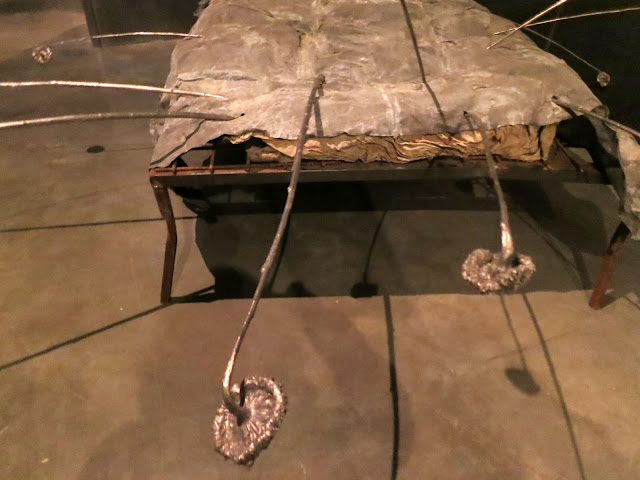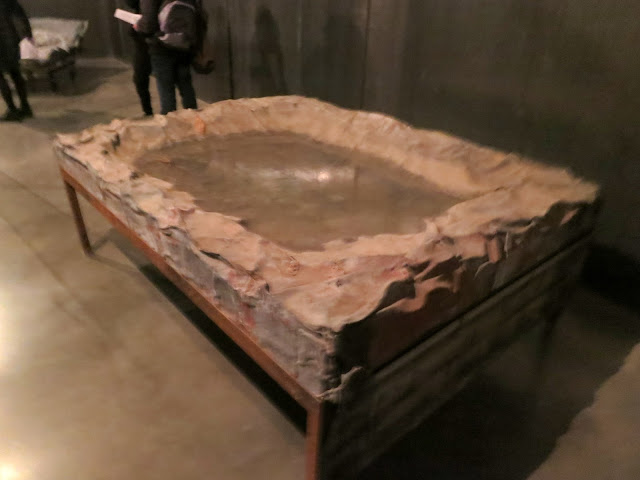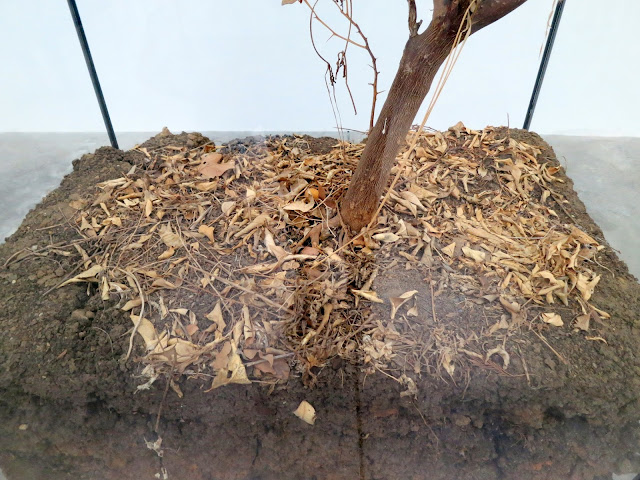'Art is difficult, it's not entertainment'. Anselm Kiefer
Anselm Kiefer - Walhalla, at the White Cube Gallery, Bermondsey.
An awe-inspiring exhibition that is totally overwhelming. A total experience. The exhibition refers to the mythical place in Norse mythology, a paradise for those slain in battle, as well as to the Walhalla neo-classical monument, built by Ludwig I King of Bavaria in 1842 to honour and mourn heroic figures in German history. As with all of Kiefer's work the exhibition interweaves themes of history, politics and symbolism through different forms and media; it conflates and connects themes, resonating with the idea of history as one continuous cycle.
The exhibition is consequently also about our time, a dire warning, an expression of the impending doom so many of us feel our world is heading towards. In the post-Brexit, pre-Trump world, in these times of austerity, of increasing violence against women, of racism becoming acceptable, of the heartless abandonment of refugees fleeing the horrors inflicted on their countries by the West, of drones killing civilians and children, Kiefer offers us an image of where this will lead. In entering the exhibition we entered the world of the Apocalypse - a grey, colourless world filled with ashes, where the detritus of our civilisation lies in ruins. Is this exhibition about Auschwitz or is it about Aleppo? The lines are blurred, and here lies the greatness of Kiefer's art.
A harrowing experience, yet, because it's such great art, because the artist's vision is so overwhelming, this experience is strangely exhilarating.
No titles or writing of any form accompanies the art works, and I was too immersed in the experience to consult the written information given by the gallery, so the images that follow are not titled.
The exhibition consists of installations, sculptures in vitrines and paintings but the whole of the exhibition is an installation in itself, so a few words on the lay-out of the gallery is in order. The entrance leads to a long corridor with three galleries on the right and three on the left. The long corridor and the three galleries on the right are dark: lit by bare light bulbs, the spaces gloomy, the walls, ceilings and floors covered with oxidised lead. The galleries on the left are white, bright and airy, a total contrast, like night and day.
The central corridor space:
We enter the dark, dimly-lit corridor, a sepulchral metallic cavern, which seems to go on for ever. It's a gallery of the fallen. Rows of fold-up steel beds are set close together and draped with dark grey crumpled lead sheets, pillows and covers - all the beds look like they have been slept in. It's like the last days of a world war. Rusty machine guns rest on some of the beds. All of the beds are marked, the last one, Brunnhilde.

The lead walls occasionally lit by the bare light bulbs
Piles of lead bedding stacked up in corners.
A small gallery, a tree branch inside a vitrine, in the middle of the space

a snake in the box at the bottom of the vitrine

on our left as we enter another lead bed, with lead sunflowers sprouting from the bedding
on the right of the door another bed, with a pool of water in the middle - water, the source of life, just like seeds. It's not all doom then, there is hope

We leave gallery 1 and we're back in the long nightmare corridor of hospital beds - this is the point you return at every stage of this exhibition. You are not allowed to forget.
Gallery 2:

This was totally unexpected and because of the crowds, difficult to make sense of it all when first entering. An archival chamber

loaded with documents, some on shelves
some in rusted safes
old machinery
discarded film reel
spilling down from shelves

on the floor

seeds
notices
Everything, rusted, rotten, dusty, bullet-holed - war salvage.
Back to the long corridor, and then to
Gallery 3:
Another leaden tomb-like chamber where a German eagle lies on a sickbed, its immense wings spread out, but its body is an immovable rock. This is the tomb of nationalist folly: an eagle doomed to crash.
Back to the corridor of the fallen and we now have reached the end
and on the wall, a blown-up photograph of a soldier walking away, a departing ghost.
The largest gallery showcasing paintings and sculpture in vitrines
I have included some images with people in front so as to show the sheer scale of these paintings

Kiefer's use of paint is sculptural and in these paintings he has also used molten lead
that sits like sculpture on the surface of the paintings
Bullet-holed wheelchairs are another recurring theme in this exhibition
Lead and an eerie light above these painted fields whose ploughed furrows reach away in vast perspective. Above a poisoned sky
while on the ground red and pink flowers create a vivid contrast
Another poisoned, molten sky, ruined towers
and bright flowers in the field
A devastated city of bombed towers, a recurring image in Kiefer's art - a memory of German cities in 1945, or an image of Aleppo now?
In this sculpture
a snake down the base
and a sunflower above
detail
detail
The boundary between painting and sculpture is blurred
seen most clearly in this sculpture
looking closer

Art made out of junk and refuse: ragged old clothes, beautifully arranged. Beautiful, but the air of doom and danger is never far away.
These monumental paintings are so weighted with the stuff of the world that they seep out into three-dimensional space. Molten-lead has been poured on to them, as well as Kiefer's more conventional materials such as broken glass and dried plants.
The ever-present ruined towers
A side view
We come out into the long corridor again before entering a small gallery
Gallery no. 5:
with a single installation
A rusty spiral staircase, reaching up to the sky, empty clothes, caked with the muck of time, hanging: the clothes of women, men and children caught up in history's storm
more old film reel

the stuff spilling on to the floor

A devastated city of bombed towers, an intimation of apocalypse, evoking the horrors of the concentration camps and the devastation occurring today in the Middle East.


Another painting of ruined towers

the blue of the sky the only bright colour

Finally, a vitrine with books,

made out of clay.
We were devastated, exhausted and at the same time, exhilarated when we left the gallery.



































































Indeed, Olga. He's a great artist.
ReplyDelete